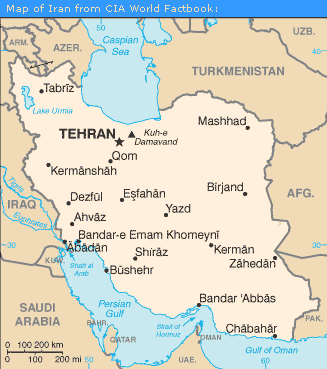Contradictions abound in the Islamic Republic of Iran. Since the Islamic revolution deposed the shah in 1979, the Iranian government has imposed theocratic rule and promoted virulently anti-American policies and rhetoric; Iranian officials have been linked to Al Qaeda, and the government backs Hezbollah in Lebanon. Yet on September 11, 2001, hundreds of thousands of Iranian citizens flooded the streets in a spontaneous candlelight vigil expressing sympathy for American victims. Women must dress modestly and wear the hijab, or headscarf, when they leave the home; in private settings, many wear Western jewelry and outfits. Unlike their neighbors, most Iranians are Persian, not Arab. The unelected supreme leader, Ayatollah Ali Khameini, is unpopular; many Iranians consider him and the ruling mullahs to be out of touch, if not corrupt. Whether reform is around the corner or not remains unclear. In late June 2005, Mahmoud Ahmadinejad, a cultural conservative, won election to Iran’s presidency in a run-off against a reformist candidate. The Interior Ministry reported “unprecedented irregularities” in the voting, and some observers feel that in an honest election, he would not have made it to the run-off — which he won convincingly. The outcome takes some pressure off Ayatollah Khameini, but not necessarily for long; Ahmadinejad ran as an economic populist, and his victory is not to be confused with an endorsement of the regime. While the timetable is uncertain, many Iranians consider change to be inevitable.
July 19th, 2005
Future for Lebanon
Map: Middle East Governments: Iran
- Introduction
- Afghanistan
- Bahrain
- Egypt
- Iran
- Iraq
- Israel
- Jordan
- Kuwait
- Lebanon
- Oman
- Pakistan
- Palestinian Territory
- Qatar
- Saudi Arabia
- Syria
- Turkey
- United Arab Emirates
- Yemen


